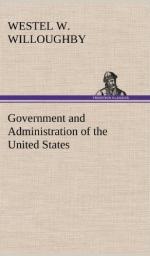John Jay, 1789-1795.
Oliver Ellsworth, 1795-1801.
John Marshall, 1801-1835.
R.B. Taney, 1836-1864.
S.P. Chase, 1864-1873.
M.R. Waite, 1873-1888.
M. Fuller, 1888.
In 1795 John Rutledge was appointed to succeed Jay, received his commission, and held one term of the court, but was not confirmed by the Senate.
During the early years of the existence of the Supreme Court few cases arose requiring its jurisdiction. During the first term there was no business to be transacted. In 1801 there were only ten cases on the docket, and for some years the average annual number of cases was twenty-four; but in later years the number rapidly increased. From 1850 the average number of cases decided was seventy-one, while from 1875 to 1880 the average was three hundred and ninety-one per annum, and now there are more than a thousand cases awaiting a hearing, and the court is so far behindhand in its work that it takes from three to four years for a case to come up for trial after having been entered upon the docket. At present there are about four hundred cases granted a hearing yearly.
Almost immediately after the adoption of the Constitution began struggles and disputes between the States and the Federal Government. In this contest the Supreme Court steadily upheld the central power, and did much by its decisions to enforce and establish the power of the Constitution. Especially was the court powerful during the years 1801 to 1835, when Marshall was chief justice, to whose wisdom and prudence it is difficult to ascribe too much influence in fixing the present stability of our government.
The Supreme Court has been an invariable supporter of the Federal Constitution. During the early years of our government it was our firmest barrier against the efforts of the States to lessen the federal power. It has always maintained the balance of power between the States and the Union.
The annual term of the Supreme Court begins the second Monday of October and lasts until about May. Daily sessions, with the exceptions of Saturdays and Sundays, are held, beginning at 12 o’clock, in the Capitol building at Washington. The present justices are Fuller, chief justice, and Lamar, Bradley, Field, Harlan, Gray, Blatchford and Brewer, associate justices. Every Saturday morning the justices meet in consultation and decide cases argued during the week. The decisions are announced on Monday mornings. The justices are appointed by the President, hold office for life, and are removable only by impeachment.
The following are a few cases decided by the Supreme Court with which it is important that we should be acquainted owing to the influence which their decision has had upon our history:




